farm processing
Javanese Coffee has grown from its origin as an Indonesian farm to a local New York City coffee roasting company with the aspiration to have complete control over all the variables and quality from farm to consumer. Only through such a holistic approach are we be able to evolve the quality and final product.
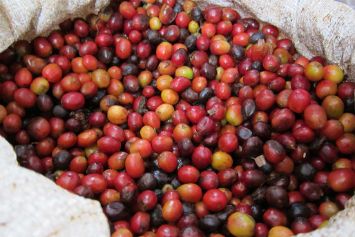
Hand Picking
1. The dedicated farm workers at Javanese Coffee only pick cherries at their peak of ripeness and must return to the same tree repeatedly throughout the harvest time searching out the ripened cherries. The level of quality, taste and aroma from 100% ripe cherries in the final product is obviously leaps and bounds better than the product from other farms which are less detailed in their approach.
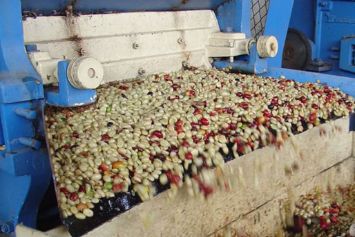
Pulping
2. Once the ripe cherries are picked the skin is removed with a pulper leaving only the mucilage.
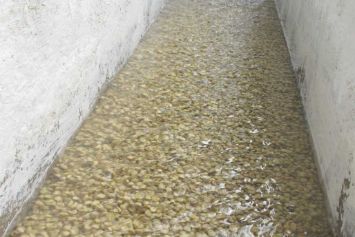
Fermenting
3. The skinned cherries now enter a fermentation bath for about 12 hours and the remaining mucilage is removed leaving the parchment covered beans.
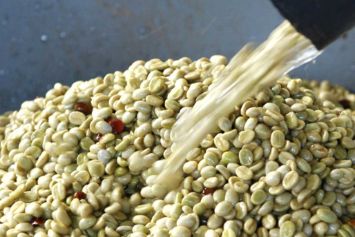
Washing
4. The fermented beans are thoroughly washed leaving the cleaned parchment covered beans. At this point all the mucilage has been removed off of the outer parchment layer.
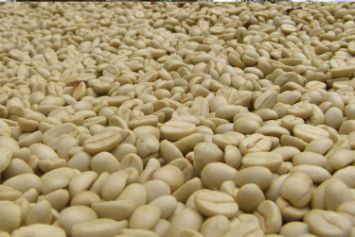
Drying
5. The parchment covered beans are dried until 11% moisture content, so the parchment is now loose around the green bean.
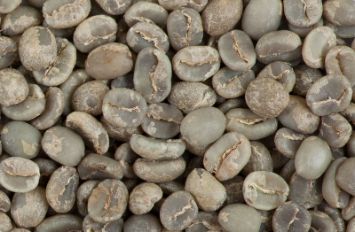
Hand Sorting
6. Finally the parchment is removed by a huller and the green bean is exposed and ready to move along to mechanical grading and manual hand sorting to separate out any undesirable beans and anomalies such as peaberries and the like.
fully washed
Fully washed processing often produces a brighter, cleaner flavor profile, with lighter body than natural process coffees or the honey process. Fully washed coffees are referred to also as washed coffees, or wet processed.
Note that the coffee seed is not fermented in this process, just the other fruit layer between the skin and the parchment shell. This is a natural action of peptic enzymes in the coffee.

Hand Picking
1. The dedicated farm workers at Javanese Coffee only pick cherries at their peak of ripeness and must return to the same tree repeatedly throughout the harvest time searching out the ripened cherries. The level of quality, taste and aroma from 100% ripe cherries in the final product is obviously leaps and bounds better than the product from other farms which are less detailed in their approach.

Pulping
2. Once the ripe cherries are picked the skin is removed with a pulper leaving only the mucilage.
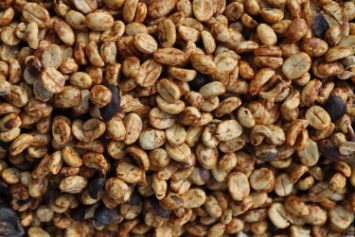
Drying
3. The drying process is one of the most difficult stages in the honey process and in any of the processes as it requires a skilled ability to dry the mucilage covered cherries to a moisture content of 14% through constant raking while keeping an eye on the weather and making sure the beans don’t ferment or grow bacteria. Once the beans have completed this stage they will be hulled removing the mucilage and parchment and the green beans are dried until they reach about 10% moisture content.
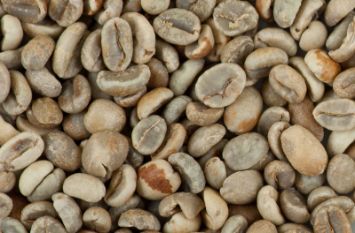
Hand Sorting
6. Finally the parchment is removed by a huller and the green bean is exposed and ready to move along to mechanical grading and manual hand sorting to separate out any undesirable beans and anomalies such as peaberries and the like.
honey process
Pulp natural coffees tend to have more body and less acidity than their fully washed process equivalents, and can have a cleaner, more uniform quality than natural process coffees.
This is This method is also called pulp natural.

Hand Picking
1. The dedicated farm workers at Javanese Coffee only pick cherries at their peak of ripeness and must return to the same tree repeatedly throughout the harvest time searching out the ripened cherries. The level of quality, taste and aroma from 100% ripe cherries in the final product is obviously leaps and bounds better than the product from other farms which are less detailed in their approach.

Pulping
2. Once the ripe cherries are picked the skin is removed with a pulper leaving only the mucilage.
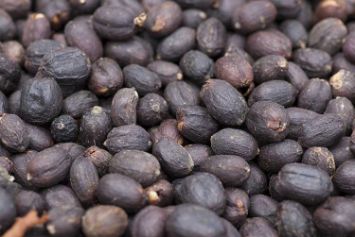
Drying
2. After the cherries have been picked they must be dried to 14% moisture content. The natural process is unique to other processes as the cherries are dried without any skin or mucilage being removed. The whole cherry, including skin and mucilage as well as all the sugars within have time to affect the bean during the drying process. This is highly challenging as no fermenting or molding must occur and hence consistent and attentive raking must be used in drying houses to achieve a well dried cherry.
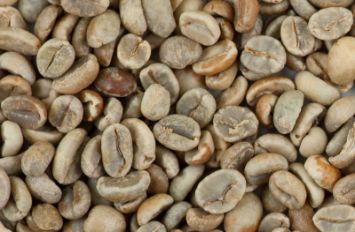
Hand Sorting
6. Finally the parchment is removed by a huller and the green bean is exposed and ready to move along to mechanical grading and manual hand sorting to separate out any undesirable beans and anomalies such as peaberries and the like.
Natural
process
Dry process coffees generally have more body and lower acidity than their wet process counterparts, with more rustic flavors due to the long contact between the drying fruit and the seed. They also can have more defects, taints, and lack of uniformity both in the roast and in cupping.
A natural process coffee is sometimes referred to as dry coffee, full natural, or traditional dry process, or abbreviated DP
Contact us
WE CONTROL ALL THE VARIABLES FROM FARMING TO ROASTING SO THAT WE CAN ALWAYS PRODUCE EXCEPTIONAL COFFEE
Through our farm, network of partner farms, and roastery we can support everything from green bean importers to direct to consumer products.
Contact us
Javanese Coffee Farm and Roastery - New York Contact Headquarters
 .
.